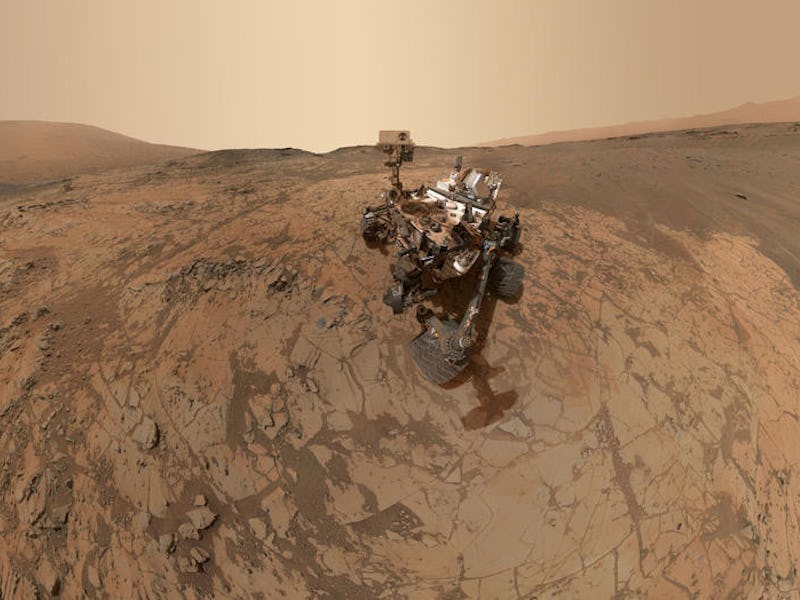Yes, NASA Is Right to Be Worried About the Curiosity Rover Seeding Life on Mars
Could new plans to expand the rover's mission accidentally contaminate Martian waters with bacteria?

Ever since NASA confirmed the presence of liquid water on the surface of Mars, scientists have been itching to investigate those dark streaks of briny liquid more in depth and better understand how water relates to habitability on the red planet. Naturally, Curiosity presents an opportunity to do just that, so NASA is currently weighing options to steer the little rover over to those potential water sites and gather more data. The problem is that having Curiosity get too close to the water could make the planet not only habitable, but inhabited.
See, while NASA has done its best to completely sterilize every little probe and satellite it ships off into outer space, nothing is 100 percent clean. Despite our best efforts, we know we’ve sent bacteria to the moon, to Mars, and potentially other worlds. Seeding other planets or moons with life from Earth is illegal and fraught with risks.
How close can Curiosity get to the Martian waters before crossing a safety threshold? “That’s exactly the question that needs to be addressed early in the process,” said Catharine Conley, NASA’s planetary protection officer, in a news release. “Kilometers away — it’s unlikely that it would be an issue. In terms of coming much closer, we need to understand well in advance the potential for Earth organisms to come off the rover, and that will tell us how far away the rover should stay.”
Now, let’s say NASA was feeling a little brave and decided to send the rover closer to the Martian water sites. And let’s say the little bugger hit a snag, stumbled down a hill, and landed in the water. How much Earth-borne bacteria would those red planet waters be teeming with?
It’s important to remember the Martian climate is a cold, dry, irradiated, destitute hellscape. Only the most robust and extreme bacteria could eke it out on the red planet, let alone have survived the journey in space itself.
That being said, there are some organisms here on Earth that could potentially find those salty Martian waters livable. Overall, if microorganisms from Earth were to make a new home on Mars, they would need to withstand below-freezing temperatures, salty conditions, intense solar radiation hits, low pressures, and more. We already see organisms on Earth that possess some of these traits. Organisms that poses all of them?
We haven’t found them yet, but you never know — one of them might have stowed away en route to Mars under NASA’s nose.